The last week before traditional 'church' Advent began was a meaningful one indeed. Much of that was bound up marking the ancient festival of Catterntide.
In my last sharing I wrote about making Cattern cakes from a Tudor recipe. It was my third year of doing so and their taste and delicious aroma have become an important part of Celtic Advent here in the hedgehermitage. But what was especially lovely was the number of people, both from the Wild Goose Collective and also from Twitter and Instagram, who posted all manner of delicious looking photos of their own Cattern cakes this year. It truly did feel that something was being reclaimed that might otherwise have been lost, if only a 300+ year old cake recipe. But we were reclaiming much more than that.
Catterntide is another name for the Feast Day of St Catherine of Alexandria, who is said to have lived from 287-305 CE, but is much more likely to be an apocryphal figure, a collection of threads of memory of many women who died for their faith around that time. Nevertheless, she was, and is, an important figure for many; considered one of the 'Fourteen Holy Helpers' ~ a group of saints first written about in 14th Century Rhineland during the bubonic plague epidemic, which came to be known as the Black Death. The Fourteen Holy Helpers were considered to be especially effective when approached in prayer, particularly against certain diseases. In St Catherine's case, her intercession was sought especially against sudden death and diseases of the tongue, the latter because she was considered to be a fine orator, as we shall see.
Catherine was an extremely important saint during the late Middle Ages, and is considered by many to have been the most revered of the virgin martyrs. Her medieval cult was established when, in 800 CE, her body was allegedly rediscovered on Mt Sinai and said to be still growing hair and with healing oil flowing from her body. Several pilgrimage narratives detailing this rediscovery added to her legend and shrines and altars holding her relics sprang up all over England and France. Both Canterbury and Westminster claim to hold phials of her oil, brought back by Edward the Confessor, and St Catherine's Hill in Hampshire, which is the site of an Iron Age hill fort is topped by a 12th Century chapel dedicated to her.
There is another chapel, this time built in the 14th Century on St Catherine's Hill near the village of Artington, Surrey.
But back to St Catherine and Catterntide. St Catherine attracted a large female following, who were less likely to make pilgrimage and more often held her up as an exemplar of ideal female behaviour; I hope that her fierce and intelligent debating skills were included in that! From the 14th Century her mystic marriage to Christ began to appear in hagiographies and in art, and the 15th Century Joan of Arc named her as one of the saints who appeared to and counselled her. That St Catherine is so deeply woven into female experience we shall see when we come to Catterntide but, first, we might hear about her life, according to the legends that have attached to her.
Catherine was born in Alexandria, Egypt in 287 CE as the daughter of Constus, the governor there during the reign of emperor Maximian. A studious child from a young age, a vision of Mary and Jesus caused her to convert to Christianity when still a teenager. When persecutions of Christians began under Maxentius, Catherine rebuked him for his cruelty using the example of Christ to persuade him to change his ways. Fifty of the emperor's most accomplished philosophers and orators were summoned to speak for him but could not best her in debate. Many converted to Christianity as a result and were executed immediately.
Catherine was cruelly beaten and imprisoned for twelve days. Such was the pity of those witnessing her treatment that they wept at the sight of her, but when the prison door was opened a bright light and beautiful perfume emanated from within and Catherine emerged looking more radiant than ever. It was said that during her incarceration angels brought her healing salve and that she was fed daily by a dove from Heaven, together with being visited by Christ.
As torture had not broken her, Maxentius proposed marriage, which she refused declaring Christ as her spouse. Furious, the emperor condemned her to death on the breaking wheel, subsequently referred to as a 'Catherine Wheel', but at her touch the wheel fell apart. Her beheading was ordered and when carried out it was said that a milk-like substance flowed from her neck.
Catherine's cult remained strong until at least the 18th Century, and she is still the subject of much devotion amongst Eastern Catholics and Eastern Orthodox Christians. It may be that as we continue to negotiate our way through the Covid-19 pandemic we will turn to her again as one of our holy helpers. That brings us to the celebration of her Feast Day, known in the British Isles as Catterntide.
St Catherine's Feast Day on 25th November is celebrated in many cultures in many different ways, which seems perfectly understandable when we consider that she is the patron saint of unmarried girls, craftspeople who work with a wheel ~ spinners, potters etc ~ archivists, dying people, educators, jurists, knife sharpeners, lawyers, librarians, mechanics, theologians, hat makers, nurses, preachers, haberdashers, philosophers, scribes, students, spinsters, tanners, and wheelwrights, among many others! But all the threads that move through her feast day meet in the life experiences of women and the dignity of women's work, as we shall see.
On St Catherine's Day in France it is the custom for young women to pray for a husband, and to honour 'Catharinettes'; those who have reached the age of 25 unmarried.
The women send postcards to one another and wear ostentatious hats, coloured green for faith and yellow for wisdom. They process to St Catherine's statue and ask for her to intercede for them lest the become spinsters and 'don St Catherine's bonnet'.
The focus on hats and bonnets has led St Catherine's Day to become a day when milliners hold a parade to show off their wares. A similar parade takes place in New Orleans the weekend before Thanksgiving.
In contrast, in the British Isles St Catherine and her Feast Day is almost entirely bound up with lace makers, who took Catterntide as an annual holiday and would save up a little money during the year to provide tea and cakes on the day, hence Cattern cakes.
That St Catherine and lacemaking have become connected may be something of a confusion, as the connection may instead be with Catherine of Aragon, much loved Queen of England from 1509 to 1533. A fine needlewoman, she was credited with teaching lacemaking to the women of Bedfordshire, Buckinghamshire, and Northamptonshire, and is said to have burned all of her lace in order to give more work to lace makers.
In Medieval times Catterntide marked the beginning of Advent, although this also sometimes began at Martinmas on 11th November. I love that Martinmas celebrates light in the form of lantern parades, stresses the importance of sharing with the poor during the winter through the story of St Martin giving half of his cloak to a beggar, and, as we enter the season of 'Peace on Earth, commemorates a soldier who refused to fight. And then we come to Catterntide, so deeply embedded instead in women's work and celebrating the production of white-as-snow lace. Even though not overtly acknowledged these two saints provide us with a mindful gateway into the winter and to the season of Advent and Christmas, just as Plough Monday and Distaff Day, close to Epiphany and Twelfth Night in early January lead us out, again rooted in the concerns of men and women respectively.
Often these are said to be secular festivals, as are the Eastern European festivals below, which survived Communism exactly because they were considered neither spiritual nor political, but this is only so in a world that divides spirit from matter. For me these festivals join both, providing us with a thread to follow through the longing and joy of Advent and Christmas which is of the world, not set apart from it. This is the message of Christmas; that Spirit became, and endlessly becomes, matter and joins us in the mess and mayhem of our lives. What could be more spiritual, or political?
And so we come to the Estonian festivals of Madripäev and Kadripäev, which take place on St Martin's and St Catherine's Feast Days respectively, not only reminding us again how intimately these two saints are intertwined, not only rooted in good work, but also marking the changing season, for here are the men's and women's festivals of winter. Kadripäev in particular is one of the most important days in the rural folk calendar and is still widely celebrated.
The 'Visit Estonia' website describes these festivals as 'autumn spiritual harvest holidays' and tells us that on both days, "children traditionally visited houses around the villages singing, telling riddles, and collecting sweets."
On Madri-eve, 10th November, the children choose a madiisa or 'father' to lead them in the festivities, and similarly on Kadri-eve a kadriema or 'mother' is chosen. The Madri-father wears dark clothes and leads a procession filled with noise; the banging of pots and pans and playing of musical instruments. Many of the participants also wear animal masks and their arrival at a house is said to bring harvest luck.
The day's revelleries end with a party where a goose is served.
In contrast, the Kadri-mother wears white, as do all the women, as a symbol of the snows of winter, and the traditional porridge, kama, peas, and beans are eaten, together with homemade beer.
Kadripäev's particular quality comes from its association with the kadrisants or 'kadri beggars', although both days involve dressing up, often on St Catherine's Day with men dressing as women, and going from door to door receiving treats in return for seasonal songs and blessings. On Madripäev these songs relate to the harvest, but on Kadripäev they refer to good luck with herds and flocks, especially sheep, through the winter, Kadri being the guardian spirit of the herds. And caring for them was primarily a concern of the women.
In order to protect the sheep, shearing was suspended between Martinmas and Catterntide, and no spinning or weaving could take take place on St Catherine's Day, often extending to knitting and sewing, echoing the lacemakers' holiday in the British Isles.
That all of these festivals, although manifesting in a variety of ways, are grounded in the seasonal change in work, and the dignity of that work, is clear but they are also rooted in the 'World Turned Upside Down', a reminder that, although this work must be done, we are not slaves and should not be treated as such, that the necessary tasks of society should be completed by common agreement, not through domination and exploitation.
Which brings me briefly to the Liberty of St Katharine in London. In 1148, Queen Matilda purchased a piece of land close to the Tower of London and established a charitable hospice there. Unusually for that time the sisters and brothers who cared for the sick were considered equals. During the Reformation the site survived by being under the protection of the Queen and, in 1442, it became a 'Liberty', which meant that it was no longer subject to the laws of the City.
The Liberty of St Katharine grew to be a maze of narrow streets and lanes with up to 1,000 houses, cottages, and tenements. It attracted the outsiders of society; prostitutes, beggars, and many people who had come to England from other countries. Although poor and overcrowded, it is striking that the mortality rate in the Liberty during the Great Plague was half that of the surrounding areas. We might contrast this with the ways in which poorer areas now are disproportionately affected by the Coronavirus, their work being subject to bosses, rather than to themselves.
The Liberty of St Katharine was demolished for redevelopment following a much contested 1825 Act of Parliament. 1250 homes were destroyed and many made homeless without compensation. At the time many considered this to be desecration of a sacred site.
Although this is to be mourned, we might still celebrate the Liberty as an inspiring example of self-organisation, even with the most meagre of resources. This is a thread that runs through all connections with St Catherine, who was, like so many workers, threatened with being 'broken on the wheel' and who claimed her own dignity, despite countless attempts to dominate her.
As an aside the wonderful Foundation of St Katharine continues the work of bringing quietly subversive spirit to East London. I have visited there on retreat on several occasions and it is an oasis of green and calm in a sea of concrete. You can find out about them here.
And so, this year I made sure to celebrate Catterntide wildly and well. I ate Cattern cakes for breakfast, went on an edge-of-winter wander and made offerings of sweet-spiced cake in a fairy ring of mushrooms.
And I was blessed to find in my path a fallen leaf that looked just like goose foot, a special enchantment as it spoke to me of the other thread I follow through Advent, that of feast days connected to wild geese and swans (of which more soon).
In the evening, the sisters of the Wild Goose Collective gathered in the Little Church of Love of the World (on Zoom of course!) to celebrate Catterntide and to step through the gateway of winter. We learned about St Catherine and her feast day around the world, we prayed, shared experiences, ate Cattern cakes, and reclaimed Catherine's Wheel as a symbol of strength. May it be so for us all. And it felt new, old, wild, and wonderful. I am already looking forward to next year.
Thank you, St Catherine for this gentle reminder that nothing is ever truly broken, and that what rises from the land, from the seasons, and from Spirit, continues to turn the world upside down.
References: see highlighted text.
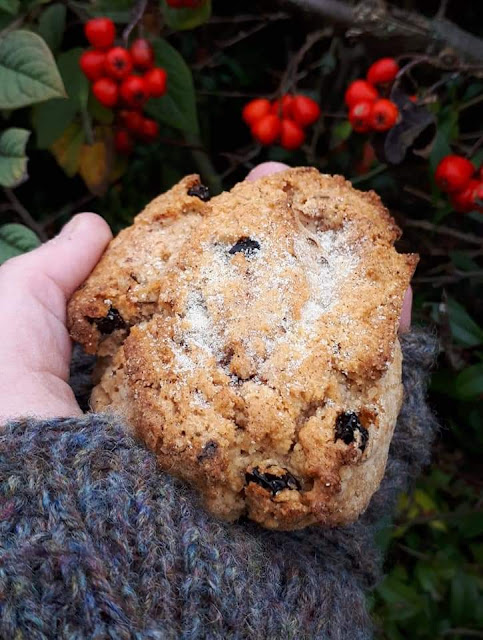
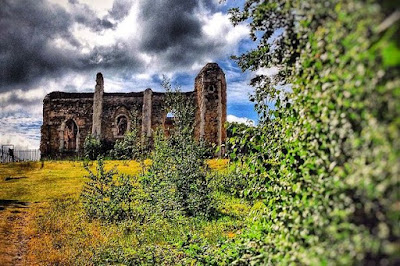
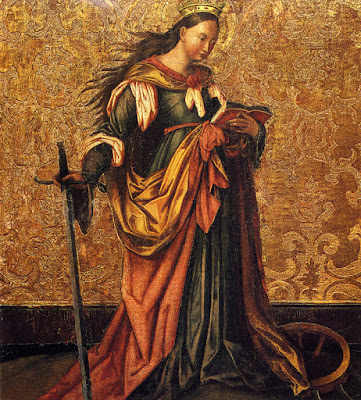

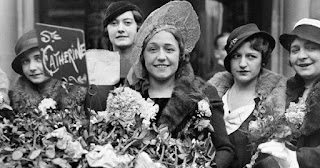

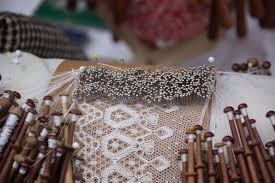



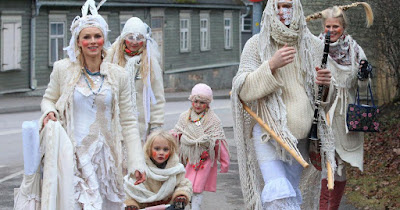





what a lovely meditation on catherine! i've always seen her as an analogue of the fateful goddesses, with a wheel of fortune and a distaff with which she spins the thread of fate...given her association with lace and fibre arts, all the more so. i love seeing how all these ancient ideas continue on through time...
ReplyDeletehow i got my Ex lover back after a divorced by the help of DR NCUBE a marriage/relationship specialist. contact him if you need help WHATSAPP DR NCUBE ON +2348155227532
Deletehis email is..... drncube03@gmail.com
he also have #herbs for
#hiv/aids
#cancerdisease
#fibroid
#diabetes